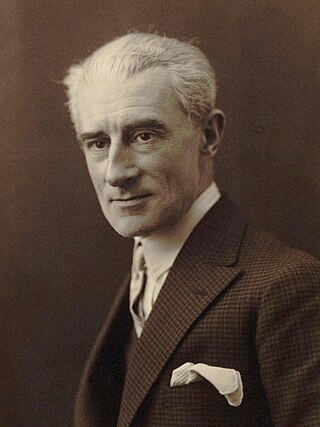
Joseph Maurice Ravel was a French composer, pianist and conductor. He is often associated with Impressionism along with his elder contemporary Claude Debussy, although both composers rejected the term. In the 1920s and 1930s Ravel was internationally regarded as France's greatest living composer.

Charles-Camille Saint-Saëns was a French composer, organist, conductor and pianist of the Romantic era. His best-known works include Introduction and Rondo Capriccioso (1863), the Second Piano Concerto (1868), the First Cello Concerto (1872), Danse macabre (1874), the opera Samson and Delilah (1877), the Third Violin Concerto (1880), the Third ("Organ") Symphony (1886) and The Carnival of the Animals (1886).
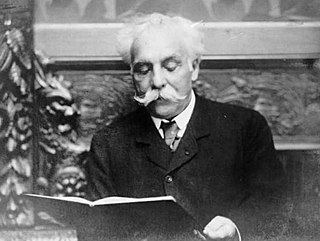
Gabriel Urbain Fauré was a French composer, organist, pianist and teacher. He was one of the foremost French composers of his generation, and his musical style influenced many 20th-century composers. Among his best-known works are his Pavane, Requiem, Sicilienne, nocturnes for piano and the songs "Après un rêve" and "Clair de lune". Although his best-known and most accessible compositions are generally his earlier ones, Fauré composed many of his most highly regarded works in his later years, in a more harmonically and melodically complex style.
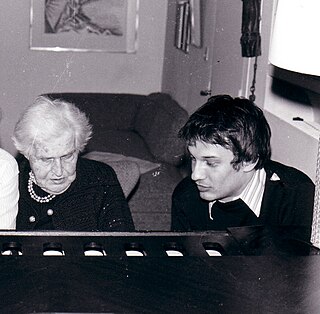
Germaine Tailleferre was a French composer and the only female member of the group of composers known as Les Six.

Clément François Théodore Dubois was a French Romantic composer, organist, and music teacher.
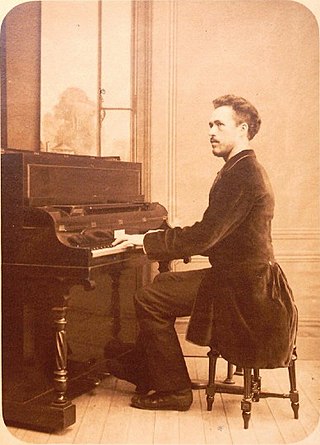
Benjamin Louis Paul Godard was a French violinist and Romantic-era composer of Jewish extraction, best known for his opera Jocelyn. Godard composed eight operas, five symphonies, two piano and two violin concertos, string quartets, sonatas for violin and piano, piano pieces and etudes, and more than a hundred songs. He died at the age of 45 in Cannes (Alpes-Maritimes) of tuberculosis and was buried in the family tomb in Taverny in the French department of Val-d'Oise.

Reynaldo Hahn de Echenagucia was a Venezuelan-born French composer, conductor, music critic, and singer. He is best known for his songs – mélodies – of which he wrote more than 100.

Robert Marcel Casadesus was a renowned 20th-century French pianist and composer. He was the most prominent member of a distinguished musical family, being the nephew of Henri Casadesus and Marius Casadesus, husband of Gaby Casadesus, and father of Jean Casadesus.
Tzigane is a rhapsodic composition by the French composer Maurice Ravel. The original instrumentation was for violin and piano. The first performance took place in London on 26 April 1924 with the dedicatee, Hungarian violinist Jelly d'Arányi, on the violin and Henri Gil-Marchex at the piano. In his biographical sketch of 1928 Ravel spoke of it as “a virtuoso piece in the style of a Hungarian rhapsody”. It consists of “a string of successive variations juxtaposed without development”.

Charles-Louis-Eugène Koechlin, commonly known as Charles Koechlin, was a French composer, teacher and musicologist. Among his better known works is Les Heures persanes, a set of piano pieces based on the novel Vers Ispahan by Pierre Loti and The Seven Stars Symphony, a 7 movement symphony where each movement is themed around a different film star who were popular at the time of the piece's writing (1933).
G major is a major scale based on G, with the pitches G, A, B, C, D, E, and F♯. Its key signature has one sharp. Its relative minor is E minor and its parallel minor is G minor.
F-sharp minor is a minor scale based on F♯, consisting of the pitches F♯, G♯, A, B, C♯, D, and E. Its key signature has three sharps. Its relative major is A major and its parallel major is F-sharp major.

Maurice Ravel's Piano Trio for piano, violin, and cello is a chamber work composed in 1914. Dedicated to Ravel's counterpoint teacher André Gedalge, the trio was first performed in Paris in January 1915, by Alfredo Casella (piano), Gabriel Willaume (violin), and Louis Feuillard (cello). A typical performance of the work lasts about 30 minutes.

A Heart in Winter is a 1992 French romantic drama film co-written and directed by Claude Sautet. It stars Daniel Auteuil, Emmanuelle Béart and André Dussollier. It was chosen to compete at the 49th Venice International Film Festival, where it won four awards, tying for the Silver Lion. It was nominated for Best Film Not in the English Language at the 47th British Academy Film Awards.

A violin sonata is a musical composition for violin, often accompanied by a keyboard instrument and in earlier periods with a bass instrument doubling the keyboard bass line. The violin sonata developed from a simple baroque form with no fixed format to a standardised and complex classical form. Since the romantic age some composers have pushed the boundaries of both the classical format as well as the use of the instruments.
Philippe Bianconi is a French pianist.
Introduction and Allegro for Harp, Flute, Clarinet and String Quartet is a chamber work by Maurice Ravel. It is a short piece, typically lasting between ten and eleven minutes in performance. It was commissioned in 1905 by the Érard harp manufacturers to showcase their instruments, and has been described as a miniature harp concerto. The premiere was in Paris on 22 February 1907.

Maurice Ravel's Violin Sonata No. 2 for violin and piano was composed from 1923 to 1927; it was inspired by forms of American music such as jazz and blues.
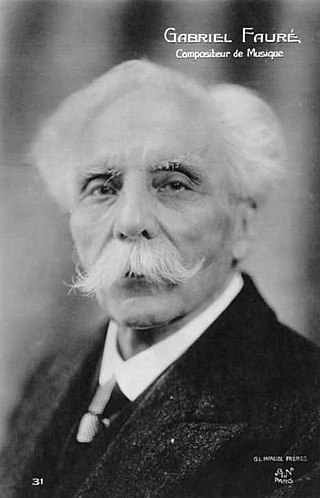
The String Quartet in E minor, Op. 121, is the only string quartet by Gabriel Fauré. Completed in 1924 shortly before his death at the age of 79, it is his last composition. His pupil Maurice Ravel had dedicated his String Quartet to Fauré in 1903, and he and others urged Fauré to compose one of his own; he declined, on the grounds that it was too difficult. When he finally decided to write it, he did so in trepidation.
Fantaisie for piano and orchestra (L.73/CD.72), is a composition for piano and orchestra by French composer Claude Debussy. It was composed between October 1889 and April 1890, but only received its first public performance in 1919, a year after Debussy's death. The work is dedicated to the pianist René Chansarel, who had been scheduled to play the solo part for the cancelled premiere in 1890.













